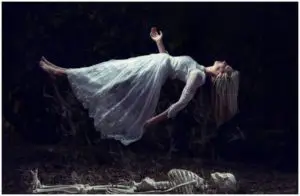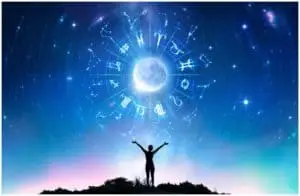Chakrasamvara emanated from the Buddha Vajradhara and was the main yidam (meditation deity) of the lineage founder Lord Jigten Sumgon.
In Western spiritual books, his name is regularly translated to mean “Highest Bliss”.
The Meaning Of Chakrasamvara Mantra
Composed in India during the eighth century, Chakrasamvara Tantra is foundational sacred writing of one of the most important Indian Buddhist tantric traditions.
Most of the well-known 80 Indian Mahasiddhas attained the highest realization relying on this deity, who is the chief yidam within the Drikung Kagyu lineage. The general lineage starts with the primordial Buddha Vajradhara, who taught Tilopa.
The lineage proceeds through Naropa, Marpa, Milarepa, Gampopa, and Phagmo Drupa, and the tradition of this practice was established by Ga Lotsawa, a contemporary of Phagmo Drupa.
This Tantra is largely dedicated to describing ritual, magical, and advanced meditative exercises. These potent exercises can be categorized with respect to the type of ”achievement” (siddhi – or spiritual power) that their successful application is thought to yield.
These are the supra-mundane achievement (lokottara-siddhi) of complete awakening, and the mundane powers (laukika-siddhi) of flight, intangibility, or pacifying enemies.
The Tantra relates, specifically or indirectly, with many mantras. The central deity, Samvara, is a type of Heruka, one of the principal yidam or meditational deities of the Sarma schools of Tibetan Buddhism, has a set of 3 mantras, a long ”root mantra” (mulamantra), a shorter ”essence mantra” (hrdayamantra), and an even shorter ”quintessence mantra” (upahrdayamantra).
The text additionally presents the essence and quintessence mantras of vajravArAhI, his consort. Both also have a set of very short mantras known as ”armor mantras” (kavaca). The remaining 60 deities in the mandala each have their own sacred mantra. The holy text also relates a few other mantras, such as the ”laughter mantra” and ”victory of the triple world” (trailokyavijaya) mantras.
The 14th Dalai Lama
His Holiness the 14th Dalai Lama gives spiritual teachings on this precious deity practice. It’s a system of anuttarayoga tantra, the most elevated of tantra practice to present.
The Dalai Lama bases much of the commentary as well as instruction on Tsongkhapa’s commentary to the abbreviated tantra, called The Complete Elucidation of the Hidden Meanings and also a discourse on the holy text, by one of His Holiness’s teachers, Tsenzhab Serkong Rinpoche, on the generation stage of the Luipa lineage of Samvara composed by a great Tibetan yogi master called Akhu Sherab-gyatso.
He addresses the all-important heart-mind inspiration for practicing deity yoga, aka bodhicitta. Without proper motivation as a reason for the practice, we would be limited to one’s own personality or “self” which provides very limited benefit.
Why do we want to know more about true motivation?
Why do we want to practice any spiritual practice and deity meditation?
The principle reason needs to be compassion, our deep concern for others, strong bodhicitta wish to achieve not only better rebirths but, beyond that, liberation from uncontrollably recurring rebirth and furthermore, the enlightened mind of a Buddha to be able to help different beings, to the extent we can, gain liberation and enlightenment themselves.
Listen to more healing mantras on insightstate, like: Hari Om Shiva Om Mantra – Hindu Mantra For Peace of Mind, Kalachakra Mantra, or Shurangama Mantra.
Image credit – @Getty
- About the Author
- Latest Posts
As a founder and chief author at InsightState.com, Bulgarea Candin helps readers on their spiritual journeys. His writings are designed to inspire creativity and personal growth, guiding readers on their journey to a more fulfilled and enlightened life.


